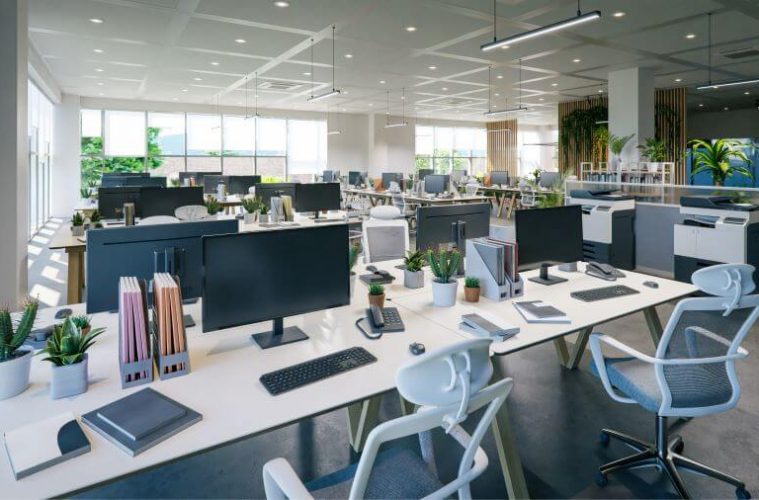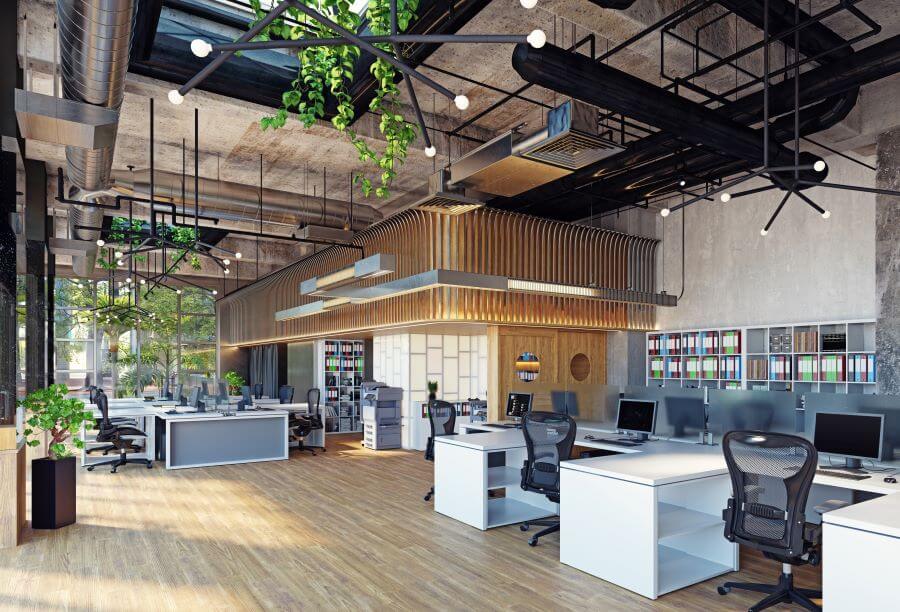With more thought than ever being given to employee wellbeing in the workplace, it’s no surprise that this promotion of happiness in the office goes hand in hand with productivity. This has got business owners thinking: what upgrades could make their offices better places to be?
This is particularly pertinent as many companies return to the office in the form of hybrid working after the global pandemic. In this article we’ll be exploring the impact of office design on employee wellbeing in productivity.
How can an office design impact employee wellbeing and productivity?
Make work somewhere your team look forward to going
Heading into work is made so much easier by knowing you’ll be spending the day in a nice and positive environment. We spend so much of our lives at work, and doing so in a space where your wellbeing has been prioritised makes you naturally want to do good work in return.
Make it easier and more efficient for employees to do what they need to do
A well designed office environment is a place in which thought has been given to the tools that employees need to do their jobs effectively. Whether this is investment in the right technology, or providing quiet zones for staff to get their heads down, productivity increases as the result of good office design.
Allow staff to collaborate with their colleagues
Great things come from strong relationships between different areas of your business, as ideas can be generated, efficiencies identified, friendships made, and a greater respect fostered between different disciplines. By opening up your office space to allow these relationships to develop, you can enjoy the fruits of a well-connected team.
Inspire your workforce
It’s much easier to feel inspired in an environment that’s both relaxed and well-equipped, as you’re far less likely to be wasting time trying to make yourself comfortable or get hold of what you need. Lightbulb moments can happen in well-designed offices, when the stress and strain of a standard office set up is removed.
Raise team morale
Knowing that you’re valued at work is so important when it comes to feeling good about your job, and therefore content in yourself. An office design into which thought and effort has been put creates a culture of appreciation, something that has such a positive impact on wellbeing and productivity.
What office design elements can improve employee wellbeing and productivity?
Thoughtful soundproofing
Background noise can be an unwelcome distraction in the office – especially when so many of us got used to our own company during work-from-home lockdowns! For focused work and important meetings, some peace and quiet is required, which makes acoustic partitioning and suspended metal ceilings helpful for absorbing unwanted office sounds.
Ergonomic desks and chairs
You’d be surprised at the damage you can do from sitting at a desk – that is, if your work space isn’t set up properly to protect your joints. To reduce back, neck and wrist strain, ergonomic chairs and desks (ideally ones that allow you to stand up) can mean you’ve got a comfortable base from which to do your best work.
The right lighting
Overhead strip lights can really ruin the mood in an office – not to mention it’s bad for our eyes. Switching from these harsh illuminations to sensitive LEDs that are adjustable and mimic natural light to create the right amount of light to see by as well as the right ambience. As a result, this can improve mood, reduce eye strain, and make it far easier to concentrate.
Chillout areas
It’s not all work and no play; the office is also somewhere for friendships to build, creativity to be sparked, and time out to take place. Chillout areas, also referred to as breakout zones, create a casual environment that changes up the scenery from the desk, and provides a space in which you can relax, unwind, and chat to your colleagues.
A layout that flows
The layout of an office can have a big impact on the harmony of the team, so it’s worth giving some thought to what goes on what floor, where meeting rooms can be placed (ideally not next to the communal kitchen), and how many desks are put together.


